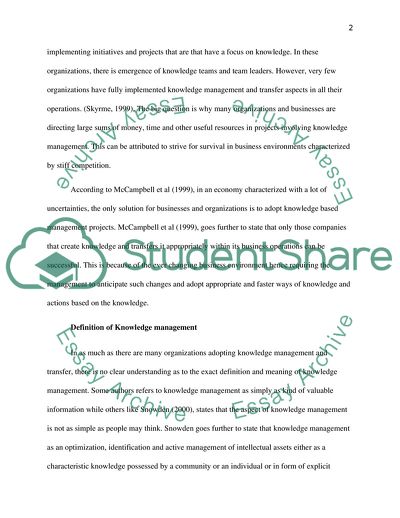Cite this document
(Knowledge Management and Knowledge Transfer Literature review Example | Topics and Well Written Essays - 3250 words, n.d.)
Knowledge Management and Knowledge Transfer Literature review Example | Topics and Well Written Essays - 3250 words. https://studentshare.org/education/1824104-knowledge-management-and-knowledge-transfer-literature-review
Knowledge Management and Knowledge Transfer Literature review Example | Topics and Well Written Essays - 3250 words. https://studentshare.org/education/1824104-knowledge-management-and-knowledge-transfer-literature-review
(Knowledge Management and Knowledge Transfer Literature Review Example | Topics and Well Written Essays - 3250 Words)
Knowledge Management and Knowledge Transfer Literature Review Example | Topics and Well Written Essays - 3250 Words. https://studentshare.org/education/1824104-knowledge-management-and-knowledge-transfer-literature-review.
Knowledge Management and Knowledge Transfer Literature Review Example | Topics and Well Written Essays - 3250 Words. https://studentshare.org/education/1824104-knowledge-management-and-knowledge-transfer-literature-review.
“Knowledge Management and Knowledge Transfer Literature Review Example | Topics and Well Written Essays - 3250 Words”. https://studentshare.org/education/1824104-knowledge-management-and-knowledge-transfer-literature-review.


